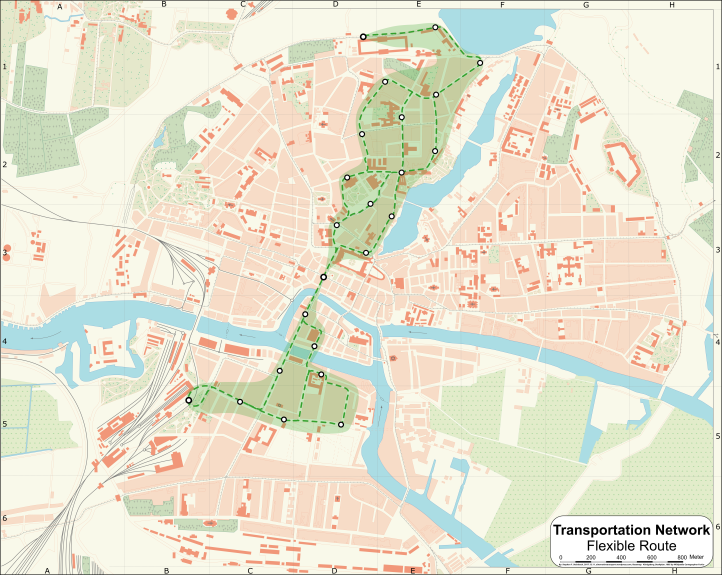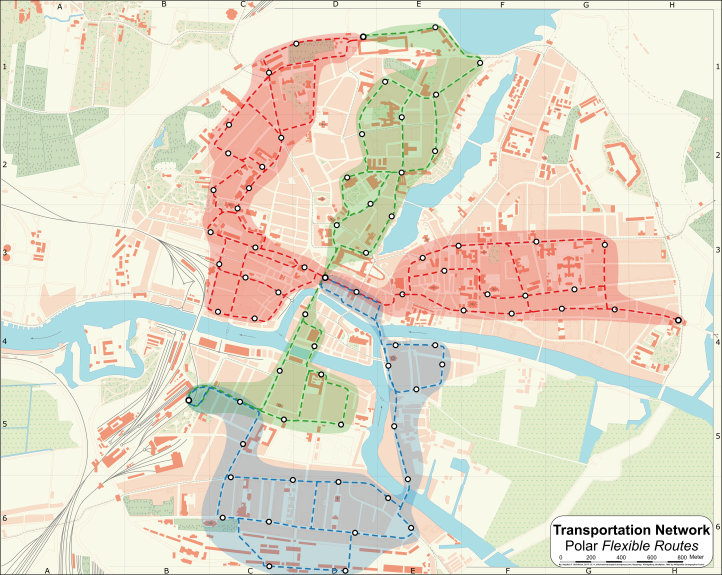Flexible Routes can add a large area covered by the network with the advantage of reducing walking distances for potential passenger. Flexible Routes originate from one point (e.g. train or metro station) leave in the direction of a destination (a particular settlement or another station). In some cases the route is predefined and merely the service interval and stops are flexible, a passenger will tell the driver when he or she wishes to disembark, and potential passenger will hand signal (or request per telephone call or mobile-app) the driver at an appropriate stopping point. In other cases the route is also flexible to an extent where the vehicle will take a small detour or an alternative route upon request of a passenger. Usually a vehicle will only leave for it’s destination if it’s capacity is full or nearly full (eg. 10 seats of 12 seats are occupied), if a enough request have been made along it’s route or if it is required to maintain a minimal interval (one minibus at least every 20 minutes).
There are circumstances where traditional tram and bus services with predefined routes and stops have not gained a service monopoly in the secondary transportation network. Those include:
- tradition of private or public-private minibus services
- low population density
- destination that usually have passengers only in particular times of day (e.g. schools, factories) or are seasonal (straw berry fields, bathing).


- Microtransit vehicle next to a Bus, by Büro autoBus, which is project to further usage of such self driving vehicles in public transportation and delivery services.
Combining several individual flexible routes to form a network may be an efficient way to serve a low density town, that nevertheless wants to provide a service to a capitve audiance (school pupils, pensionists, ect…) and might be the first step to locating a viable route for a later fixed route service.
 |
 |